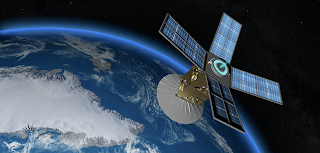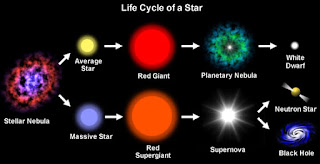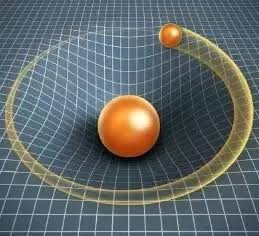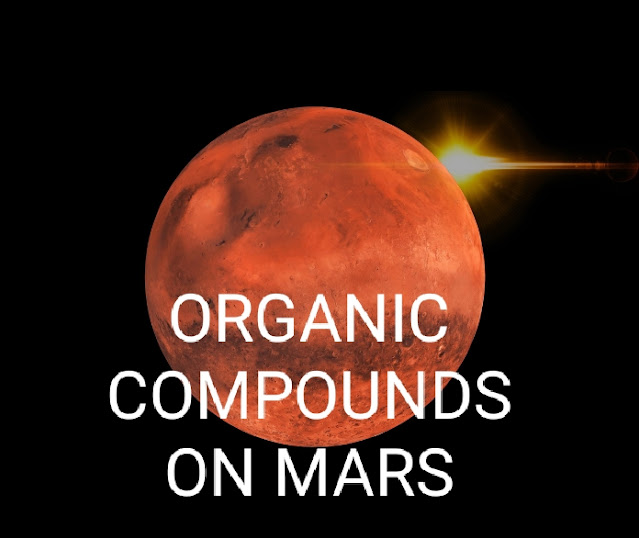SATELLITE 🛰️
What Is A Satellite?
A satellite is a moon, planet or machine that orbits planet or star. For example, Earth is a satellite because it orbits the Sun. Likewise the Moon is a satellite because it orbits Earth. Usually, the word "satellite" refers to a machine that is launched into space and moves around Earth or any other body in space.
Earth and moon are examples of natural satellites. Thousands of artificial or man-made satellites orbit Earth. Some take pictures of the planets that help meteorologists predict wheather and track hurricanes. Some take pictures of other planets, the Sun, Black Holes, Dark Matter or faraway Galaxies. These pictures help scientists better understand the Solar System and Universe. Still other satellites are used mainly for communications, such as beaming TV signals and phone calls around the world. A group of more than 20 satellites make up the Global Positioning System, or GPS. If you have a GPS receiver, the satellites can help figure out your exact location.
ISS(International Space Station).
This high-flying satellite is a laboratory for new technologies and an observation platform for astronomical, environmental and geological research. As a permanently occupied outpost in outer space, it serves as a stepping-stone for further space exploration.
The station flies at an average altitude of 248 miles (400 kilometres) above Earth. It circles the globe every 90 minutes at a speed of about 17,500 mph (28,000kph). In one day, the station travels about the distance it would take to go from Earth to the Moon and back. The Space Station can rival the brilliant planet Venus in brightness and appears as a bright moving light across the night sky. It can be seen from Earth without the use of a telescope by night sky observers who know when and where to look.
Structure
The International Space Station was taken into space piece-by-piece and gradually built in orbit. It consists of modules and connecting nodes that contain living quarters and laboratories, as well as exterior trusses that provide structural support, and solar panels that provide power.
Crew Size
A six-person expedition crew typically stays four to six months aboard the ISS. With a full complement of six crew members, the station operates as a full research facility. Crews are not only responsible for science, but also for maintaining the station. Sometimes, this requires that they venture on spacewalks to perform repairs.
If the crew needs to evacuate the station, they can return to Earth aboard two Russian Soyuz vehicles docked to the ISS.
What Is The International Space Station Used For?
The International Space Station(ISS), the largest International scientific and technological endeavour ever undertaken, draws on the resources and scientific expertise of 16 Nations around the world. Canada, Japan, 11 members of European Space Agency (ESA), Russia and Brazil our partners. It is a permanent laboratory where gravity, temperature and pressure can be manipulated in a variety of scientific and pursuits in ways that are impossible in ground-based laboratories. The main components of ISI include Environmental Control System and Life Support System (ECLSS), Thermal Control System (TCS) and Power Management System.
Shop Now PANTRY ITEMS
Amazing Facts About ISS!
1. 242 individuals from 19 countries have visited the International Space Station.
2. The space station has been continuously occupied since November 2000
3. ISS orbits the Earth about once every 90 minutes. During the orbit of the Earth astronauts are in a day light for about 45 minutes and darkness for about 45 minutes. That means Sun will rise and set 16 times a day.
4. Fifty-two computers control the system of ISS.
5. The ISS solar array surface (240 feet) area could cover the U. S. Senate Chamber three times over.
6. Eight miles of wire connects the electrical power system aboard the space station.
7. To mitigate the loss of muscle and bone mass in the human body in microgravity, the astronauts work out at least two hours a day.
8. The space station has an internal pressurized volume equal that of a Boeing 747.
9. The Water Recovery System reduces crew dependence on water delivered by a cargo spacecraft by 65 percent – from about 1 gallon a day to a third of a gallon.
10. Peggy Whitson set the U.S. record for spending the most total time living and working in space at 665 days on Sept. 2, 2017.
THANK YOU.










Wonderful
ReplyDeleteInteresting
ReplyDelete